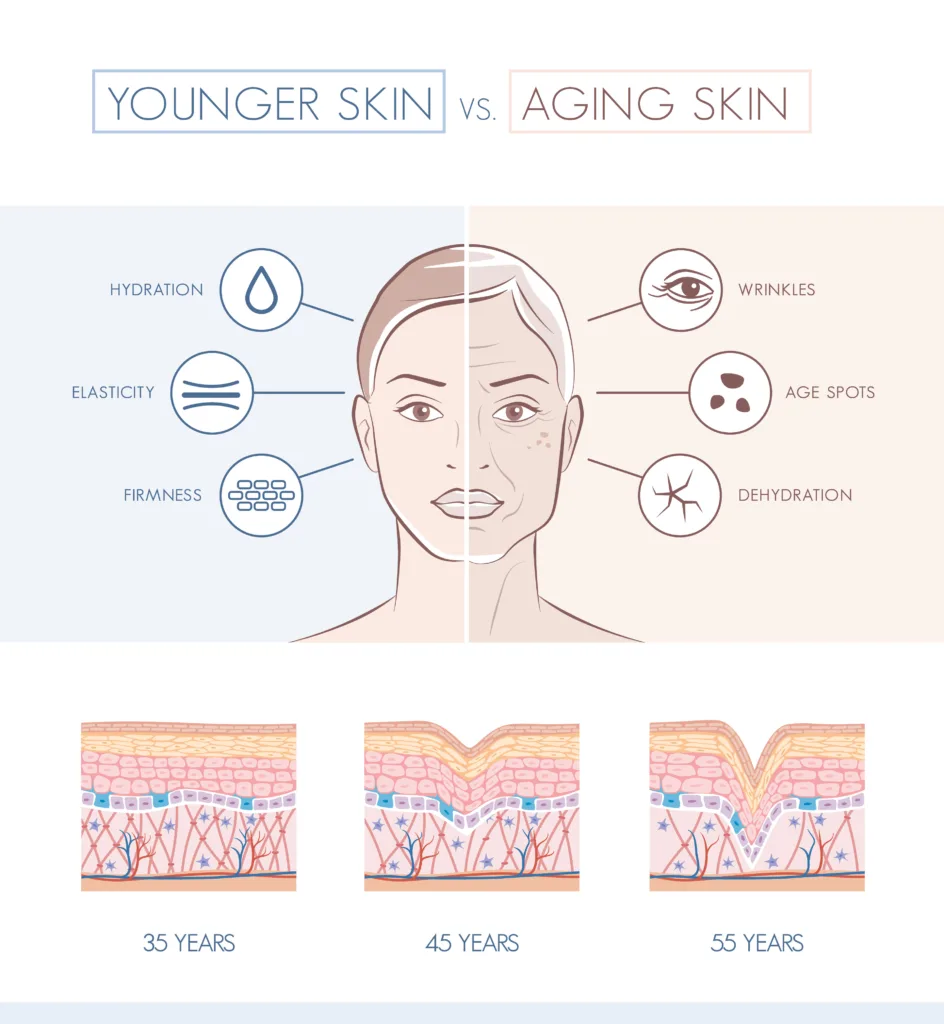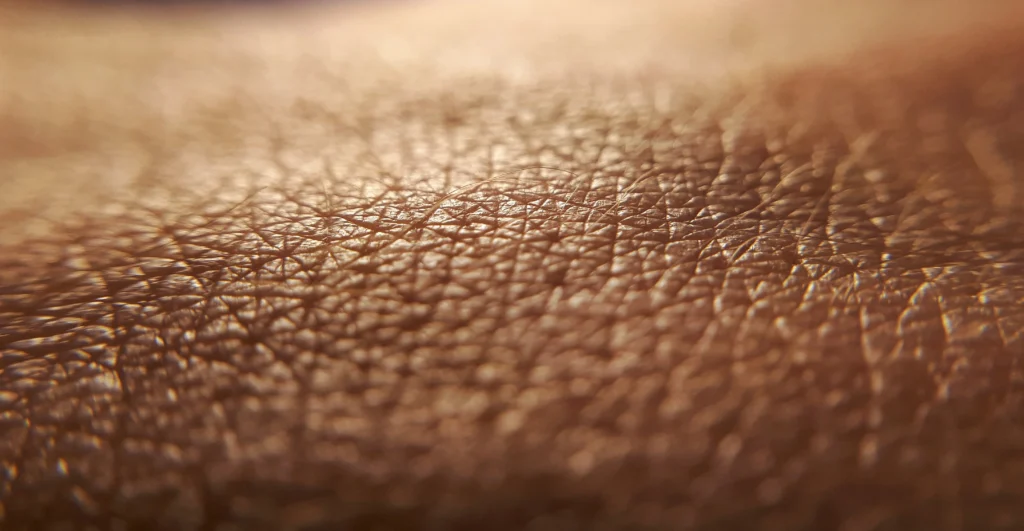
If you ask anyone using retinoids to change one thing, that would be irritation.
And if you are a retinoid user, you often feel like having to compromise between effectiveness and comfort.
Higher concentration yields better results but in turn, increases irritation.
Whilst retinol products often force you to choose between effectiveness and comfort, a new compound has emerged that refuses to compromise on either front.
It’s called Granactive Retinoid.
This compound is also known as Hydroxypinacolone Retinoate (HPR) and is a retinoic acid ester, meaning it can interact directly with skin receptors without requiring conversion (more on that later).
Unlike conventional retinoids, granactive retinoid is designed to stimulate cell turnover and boost collagen production with minimal irritation. When combined with retinol palmitate (which is naturally found in the skin), it has shown promising results in increased collagen production, reduced fine lines, and improved skin elasticity.
Table of Contents
What is Granactive Retinoid?
Granactive retinoid is actually a trademark name for hydroxypinacolone retinoate (HPR) and is the latest addition to the Vitamin A family. Being a retinoid means that it helps your skin’s renewal process such as skin texture and tone, and improves the signs of ageing.
On the ingredients list, granactive retinoid will show as hydroxypinacolone retinoate.
What makes HPR unique, however, is that, unlike retinol, it directly stimulates the retinoic acid receptors in your skin (similar to retinoic acid) without the typical irritation. This direct action contributes to its effectiveness in promoting cell turnover and boosting collagen production.
It’s unique characteristic is thanks to it being a retinoic acid ester. This makes it an active form of vitamin A, which the skin understands as retinoic acid, binding directly to the skin’s retinoid receptors.
Retinol, for instance, needs two steps to convert to retinoic acid within the keratinocytes to be active.
The conversion looks like this:
– Retinol Esters -> Retinol -> Retinaldehyde -> Retinoic Acid (the bioactive form of Vitamin A).
– Retinoic Acid Esters (HPR) = Bioactive form of Vitamin A.

Each conversion step weakens the potency and effectiveness of the product. As a result, a 1% retinol product is not as powerful as a 0.025% retinoic acid, even though the retinol concentration is higher.
A key point to consider is that hydroxypinacolone retinoate is considered a bioactive form of Vitamin A in the sense that it can directly interact with retinoic acid receptors in the skin without needing conversion to retinoic acid. However, it is technically a retinoic acid ester rather than retinoic acid itself.
What are the Benefits?
In addition to minimizing fine lines and wrinkles, HPR provides several other benefits.
It is known to improve skin texture and tone by promoting cell turnover, which helps to even out the skin’s surface and reduce the appearance of hyperpigmentation.
Additionally, it helps combat collagen breakdown and stimulates collagen production, which can restore the skin’s natural elasticity and firmness.
While all of the above is generally true with all retinoids, it’s not exactly unique. Yet, the way it manages all of that is what sets HPR apart:
- Gentleness: what really sets HPR apart from other retinol formulations is that it’s significantly gentler on your skin. While traditional retinol often leaves you dealing with redness, peeling, and that dreaded adjustment period, Granactive Retinoid (or HPR) gets straight to work without the drama.
- Longevity: the stability factor is another huge win. While traditional retinol can be quite finicky and more likely to degrade, HPR maintains its potency longer. Plus, by working both instantly and over time – you’re getting immediate benefits while also building up to those long-term results. This is especially great for sensitive skin folks!
- Instant action: traditional retinol needs conversion before your skin can use it, which is exactly why it can be so irritating. But HPR? It skips that whole process and binds directly to your retinoid receptors.
Granactive Retinoid vs Other Retinoids

A quick recap on how retinoids work: they penetrate dermal cell membranes and convert them into retinoic acid, which then binds to specific nuclear receptors, regulating the expression of genes responsible for cell growth and specialisation.
By modulating these cellular processes, retinoids effectively improve skin texture, reduce the appearance of wrinkles and help manage acne breakouts.
Retinoids can be categorized into five types: retinyl esters, retinol, retinaldehyde, retinoic acid esters, and retinoic acid. The first four are available over-the-counter, while retinoic acid is only accessible through a prescription:
- Retinol Esters (or retinyl esters): These are the least potent form of retinoids as they require three steps to become bioactive. Examples of retinol esters are: retinyl palmitate, retinyl linoleate, retinyl acetate, and retinyl propionate. A great choice for beginners.
- Retinol: Is the most common form of Vitamin A and it takes two steps to convert to retinoic acid. Although it is one of the most studied skincare ingredients, it’s notorious for irritating the skin, especially during initial use.
- Retinal (or Retinaldehyde): With just one step away from converting to retinoic acid, retinal is the most potent OTC (over-the-counter) retinoid.
- Retinoic Acid Esters: The newest form of Vitamin A comes in the forms of: retinyl retinoate and hydroxypinacolone retinoate (HPR). In terms of efficacy, HPR is about as effective as retinal, but on the irritation scale, we can compare it to retinol esters (the least irritant).
- Retinoic Acid(or tretinoin): The most potent form of Vitamin A and, as such, is only available on prescription. It works directly on the skin (doesn’t require conversion) to promote cell turnover and collagen production. Retinoic acid is highly effective for treating severe acne, fine lines, and hyperpigmentation.
Granactive Retinoid vs Retinoic Acid
You might be asking yourself: If retinoic acid esters (such as HPR) do not need conversion to be active on the skin, why aren’t they as strong and irritating as retinoic acid?
There are three reasons for it:
- Retinoic acid esters have a larger molecular structure compared to retinoic acid. This means they have a slower and more controlled release of the active ingredient, resulting in less irritation.
- The ester structure of these compounds makes them more stable and less likely to cause irritation compared to retinoic acid. A study comparing retinyl retinoate (a retinoic acid ester) to other retinoids found it more effective at producing hyaluronan (a moisturizing compound) and less irritating.
- The slower release and controlled delivery of retinoic acid esters results in lower overall concentrations of retinoic acid in the skin compared to the direct application of retinoic acid itself.
What are the Side Effects of Granactive Retinoid?
Even though HPR is considered a step up from traditional retinoids, it’s still important to be mindful when you introduce it to your skincare routine as it may:
- Can cause irritation: Being a type of retinoid, some people may still experience mild side effects during initial use. These can include slight redness, dryness, and occasional flaking. However, these reactions are typically less severe than those associated with conventional retinol products. To minimise irritation, begin with a lower concentration and mix with your favourite non-comedogenic moisturiser.
- Increases UV Sensitivity: As with all retinoids, granactive retinoid increases photosensitivity. Your skin becomes more susceptible to UV damage whilst using this active ingredient, making daily sun protection absolutely essential. To protect your skin, apply broad-spectrum sunscreen with at least SPF 30 every morning, even on cloudy days, and reapply throughout the day as needed.
As always, if you experience severe side effects, such as persistent redness, swelling, or burning, you should discontinue the use and consult a dermatologist.
Before You Leave
If this article has piqued your interest in retinoids and looking to learn more, then be sure to check out our article: Retinol 101| Benefits, Expectations and More!
Additionally, there’s a plant-derived alternative to retinol which you’ll find interesting called bio-retinol. We’ve covered the topic here: Bio-Retinol: Is it the New Retinol for Sensitive Skin?